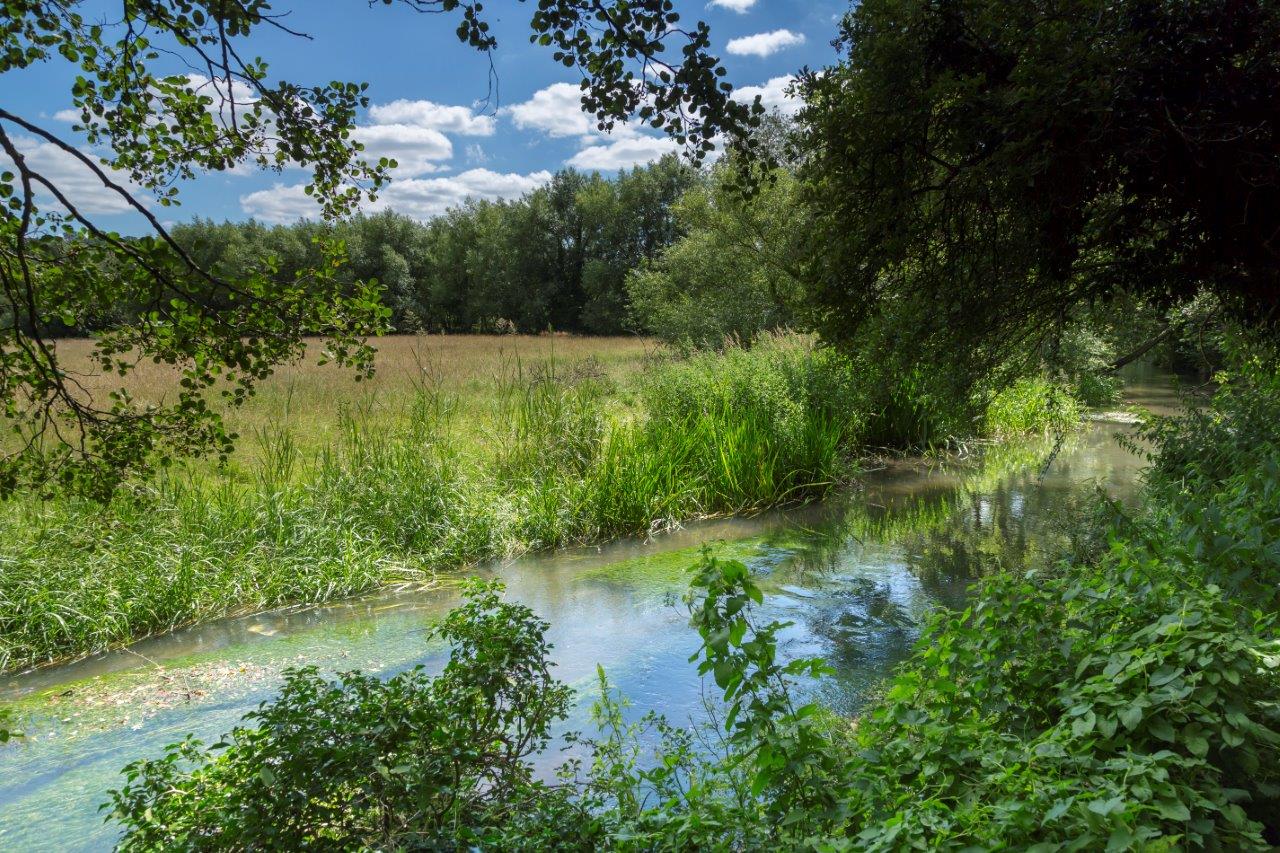Water and wetlands
Rivers, marshes and ponds are important components of the landscape of the Kent Downs and also provide valuable habitat for wildlife.
Rivers
Rivers, streams, springs and ditches include a great variety of habitat and landscape types and are important features of the Kent Downs. The Kent Downs is crossed by three major rivers, the Darent, Medway and Stour which carve their way through the Kent Downs landscape.
- The River Darent is a chalk stream that flows between Westerham and Dartford Marshes in West Kent. It has been used for thousands of years and has some significant sites dating back to the Romans who settled and farmed in the valley. Much of the riverside land is still farmed, although residential and commercial uses have become very important. The river itself has been manipulated, channelled and diverted many times; records show a mill settlement near Otford as early as 822.
- The River Medway is a major tidal river and an important east-west divide in mid Kent. It is said to have been crossed by the invading Roman army in AD43 and Roman settlements include a villa at Eccles. It was also used to transport goods in the cement industry that established along the river in the 19th century until 2000.
- The River Stour in east Kent changes in character as it flows through the Kent Downs from the south west. The course and flow of the Stour have been influenced over centuries by structures such as weirs, water mills, sewage works and diversion for the construction of the railway. Yet it still provides a valuable habitat for many flora and fauna as well as an important and cherished part of the Kent Downs landscape.
Marshes
Marsh can be defined as land that is waterlogged for at least part of the year. Marsh land is not common in the Kent Downs National Landscape because of the free-draining nature of much of the underlying rock such as chalk. However, small areas of marsh can be found which are important for wildlife and contribute to the variety of the landscape.
Marshy areas can be found at the base of the Downs and depending on the soil type, are referred to marsh, fen or bog. A great deal of marshland has been lost, having been drained and ploughed for agriculture. This is particularly the case on Romney Marsh, a small area of which is included in the Kent Downs.
Ponds
Ponds are generally uncommon in the National Landscape because of the underlying nature of the chalk with most found in the Low Weald. Approximately 75% of ponds in Britain have been lost in the last 100 years mainly because of drainage and land intensification. Yet ponds are vital for wildlife and an important feature in the landscape.

